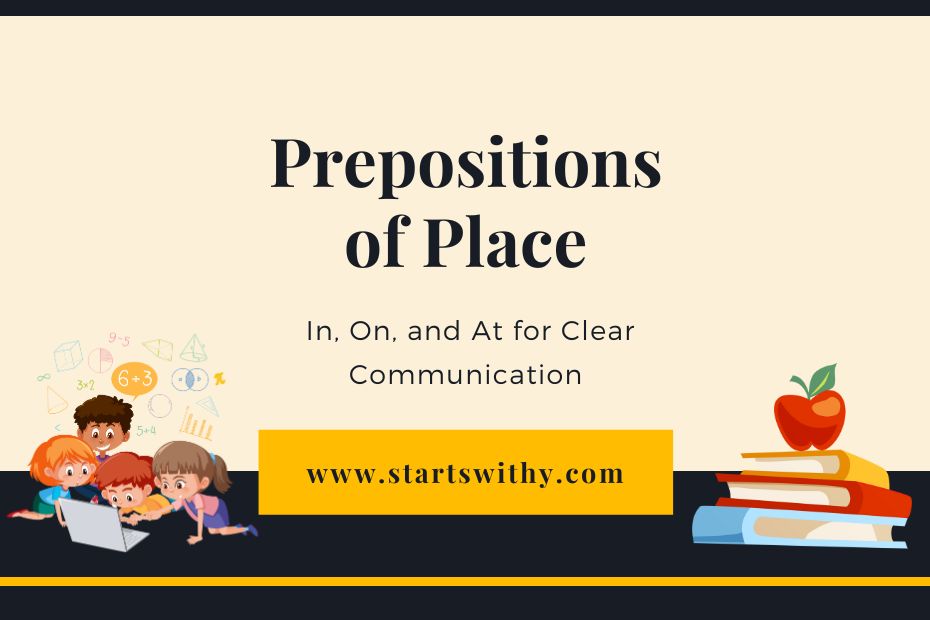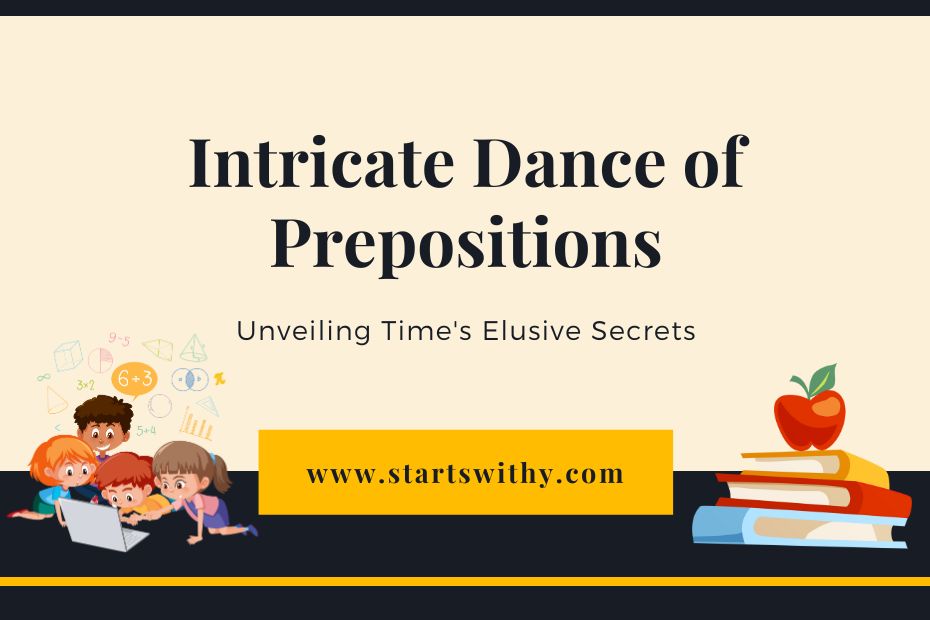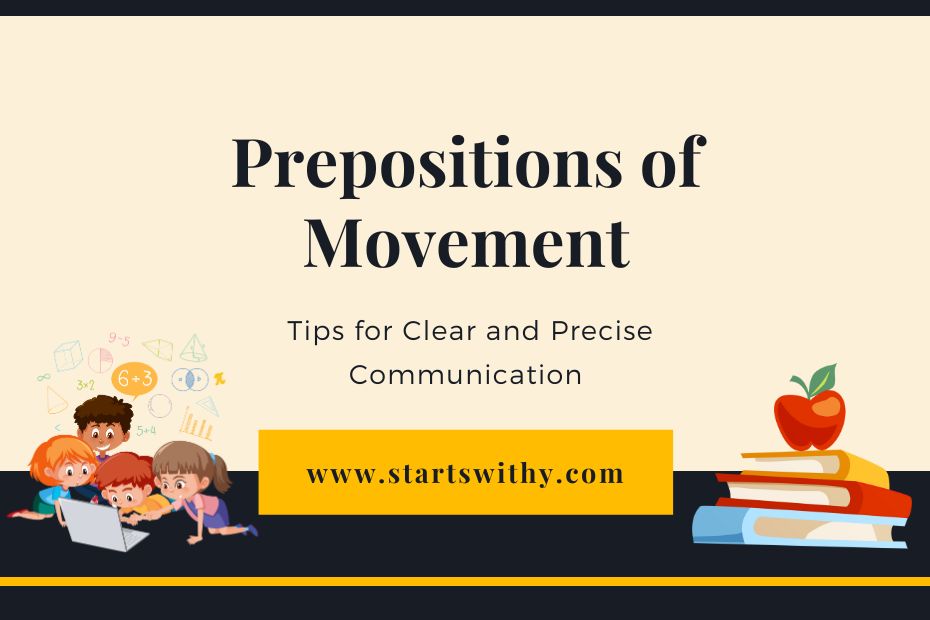Prepositions may seem like small and insignificant words, but they play a crucial role in our everyday language. They help us describe the relationship between people, places, and things in the world around us. One particular type of preposition that often goes unnoticed is the preposition of place. These prepositions help us understand where things are located in relation to other objects or people. In this article, I’ll delve into the world of prepositions of place, exploring their uses and providing examples to help you grasp their importance in our language.
Have you ever wondered how to accurately describe the position of an object or the location of a person? Prepositions of place are the key to conveying this information. From simple prepositions like “in,” “on,” and “under,” to more complex ones like “between” and “beside,” these words paint a vivid picture of where something is situated. Whether you’re talking about the cat on the table, the book under the bed, or the keys between the cushions, prepositions of place help us navigate the spatial relationships in our world. Join me as we explore these prepositions and their uses through a series of examples that will bring clarity to this often overlooked aspect of our language.
What is a Preposition of Place?
Prepositions of place are an essential part of our everyday language. They help us describe the relationship between people, places, and things, and allow us to understand where objects are located in relation to other elements in a given space. These prepositions allow us to accurately convey the position of an object or the location of a person.
A preposition is a word that affects the meaning of a noun or pronoun by describing its relationship to the world. While adjectives describe the qualities of nouns, prepositions describe the relationship of nouns and pronouns to other elements. There are different types of prepositions, including those that express relationships to purpose, time, movement, and location.
Prepositions of place specifically describe the position or location of an object or person. They help us understand where something is in relation to other people, places, or things. In many cases, the verb “estar” (to be) is used with these prepositions because it pertains to being and location. However, other verbs like “colocar” (to place), “ubicar” (to position), and “poner” (to put), can also be used with prepositions of place.
Here are some common prepositions of place and their respective examples:
- In: The cat is in the room.
- On: The book is on the table.
- Under: The keys are under the pillow.
- Between: The car is parked between two buildings.
- Above: The clouds are above the mountains.
- Beside: I’m sitting beside my friend.
These examples demonstrate how prepositions of place are used to indicate the location of objects or people in relation to other elements. They help us paint a clear picture of where things are and how they are positioned in a given space.
Understanding prepositions of place is crucial for effective communication, as they allow us to describe the spatial relationships between objects and people. Mastering the usage of these prepositions can enhance our language skills and ensure that we convey information accurately. So, let’s dive deeper into the world of prepositions and explore their various uses and contexts.
Common Prepositions of Place
In
When it comes to describing location or position, the preposition “in” is commonly used in the English language. It indicates being inside or within a specific place or thing. For instance, we use “in” to talk about the position of objects in different locations, such as “The keys are in the house” or “The cake is in the oven.” Even when referring to people, “in” is used to show their location, like “The kids are in their room.”
In advanced English, “in” is often used with prepositional phrases to convey different situations. To fully grasp its intended meaning, it’s important to read other vocabulary words in context. For example, phrases like “in addition to,” or “in front of” add specificity when indicating location or position.
On
The preposition “on” is another essential preposition of place. It depicts the position of an object or person above or in contact with a surface. For example, we use “on” to describe the position of objects on different surfaces, such as “The cat is on the table” or “The soup bowls on the table.” It specifies the relationship between the object or person and the surface they are on.
At
Lastly, the preposition “at” is commonly used to specify a precise location or point in space. It describes being present or located in a particular place or position. For instance, we use “at” when talking about being at a specific address or place, like “I’m at the grocery store” or “She’s at the library.”
The preposition “at” is often used with expressions of time as well, indicating a specific moment or point in time, such as “at 8 o’clock” or “at midnight.” It helps to provide a sense of accuracy and specificity when describing a particular location or time.
Understanding these common prepositions of place, “in,” “on,” and “at,” is crucial for effective communication and clarity in describing location or position. They play a significant role in accurately conveying the relationship between objects, people, and places.
Prepositions of Place with Specific Locations
Inside
When we talk about the preposition “inside,” we are referring to the location of something or someone within the interior or enclosed space of an object or place. This preposition helps us understand that the noun is covered everywhere by something. Here are a few examples:
- The keys are Inside the drawer.
- The dog is resting Inside the kennel.
- The toys are kept Inside the box.
Outside
On the other hand, the preposition “outside” shows that something or someone is situated on the exterior or outer surface of an object or place. It indicates that the noun is positioned on the outer side. Here are some examples:
- The children are playing Outside the house.
- The birds are chirping Outside the window.
- He was waiting Outside the restaurant.
Above
The preposition “above” helps us describe a location or position where something or someone is higher in relation to another object. It signifies that the noun is situated at a higher point.
Below
Conversely, the preposition “below” indicates a location or position where something or someone is lower in relation to another object. It signifies that the noun is situated at a lower point.
Near
The preposition “near” is used to express that something or someone is close to another object or person. It implies that the distance between the two entities is small.
Far
Contrary to “near,” the preposition “far” means that something or someone is located at a distance from another object or person. It implies that the distance between the two entities is considerable.
Beside
The preposition “beside” is employed to indicate that something or someone is located by the side of another object or person.
Behind
Similar to “beside,” the preposition “behind” indicates that something or someone is located at the back or rear of another object or person. It suggests that the noun is positioned at a further point from the reference point.
Between
Lastly, the preposition “between” helps us express a location or position where something or someone is situated in the middle of two or more objects or people. It signifies the position of the noun in relation to the objects or people on either side.
By understanding and correctly using these prepositions, we can effectively communicate and describe the precise location or position of objects and people in our everyday language without the need for lengthy explanations.
Prepositions of Place with Modes of Transport
In
When we talk about the use of prepositions of place in relation to modes of transport, the preposition “in” is commonly used. It allows us to describe being inside a vehicle or a means of transportation. Here are a few examples:
- I traveled In a car to reach my destination.
- We sat In the bus while waiting for the traffic to clear.
- She likes to read a book In the train during her daily commute.
On
Another important preposition of place when discussing modes of transport is “on.” This preposition is used to indicate being on a vehicle or a means of transportation. Let’s take a look at some examples:
- We had a picnic On the beach, listening to the waves and feeling the breeze On our faces.
- They prefer to travel On a bicycle rather than using public transportation.
- She always sits On the back of the motorcycle, enjoying the view as they ride through the countryside.
By
The preposition “by” is often used to describe the means or method of transportation used to get from one place to another. Here are a few examples:
- I traveled to the city By train, which was a fast and convenient option.
- They decided to go on a road trip, exploring the country By car.
- She flew to her destination By plane, enjoying the aerial view from above.
Understanding how prepositions of place work in relation to modes of transport is crucial for effective communication and clarity in describing location or position. Remember to choose the correct preposition to accurately convey the intended meaning.
Prepositions of Place with Buildings and Structures
In
When it comes to describing the position of someone or something within a building or structure, we often use the preposition “in.” This preposition indicates that the person or object is located inside an enclosed space. Here are a few examples:
- I am in my office, working on an important project.
- The books are in the library, neatly arranged on the shelves.
- They are in the stadium, eagerly waiting for the concert to begin.
Using “in” helps us provide specific details about the location, emphasizing the idea of being inside a particular building or structure.
On
Sometimes, we need to describe the position of objects or people on the surface or top of a building or structure. In these cases, we use the preposition “on.” Here are some examples:
- The cat is sitting on the roof, enjoying the sunny weather.
- I left my keys on the table in the living room.
- They placed the signboard on top of the building, making it visible from afar.
Using “on” helps us convey the idea of being in a location that is physically above or atop something else.
At
Lastly, the preposition “at” is commonly used when we want to describe a specific location or address. It is often associated with buildings and structures that serve as reference points. Here are a few examples:
- The office party is at the new restaurant downtown.
- The conference will take place at the convention center.
- We met at the museum to discuss the upcoming exhibit.
Using “at” allows us to provide precise information about the location, ensuring clarity and effective communication.
By understanding the use of these prepositions in relation to buildings and structures, we can accurately describe the position and location of people and objects in various contexts. Remember, prepositions of place play a crucial role in helping us express relationships and provide clear descriptions within our environment.
Conclusion
Understanding prepositions of place is essential for effective communication and clarity when describing the position or location of someone or something within a building or structure. This article has discussed the importance of prepositions like “in,” “on,” and “at” in relation to buildings and structures.
By using these prepositions correctly, you can provide precise information about where objects are located or where actions are taking place. For example, saying “the book is on the table” gives a clear image of the book’s position, while “I’m in the library” indicates your location within a larger building.
Mastering prepositions of place allows you to convey information accurately and avoid misunderstandings. Whether you’re giving directions, describing a scene, or talking about your surroundings, using the correct prepositions will enhance your communication skills.
So, next time you find yourself needing to describe the position of something or someone in relation to a building or structure, remember the importance of prepositions of place. They are powerful tools that can help you communicate with precision and clarity.



